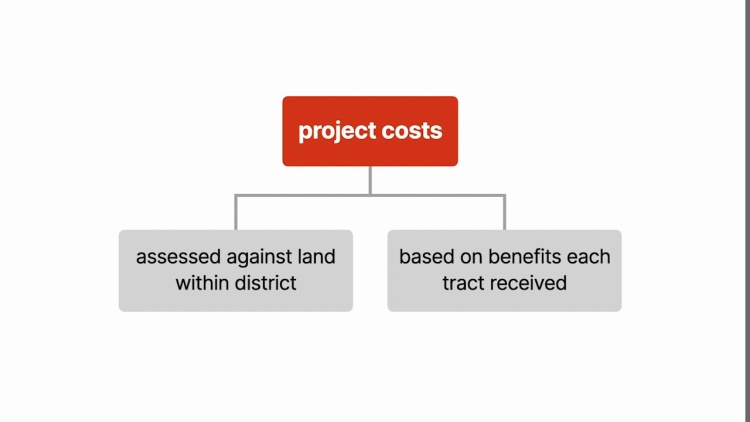Salyer Land Co. v. Tulare Lake Basin Water Storage District
United States Supreme Court
410 U.S. 719 (1973)
- Written by Heather Whittemore, JD
Facts
The Tulare Lake Basin Water Storage District (the district) (defendant) was made up of 193,000 acres of farmland in the Tulare Lake Basin and had a population of 77 people, most of whom worked at companies that farmed the land in the district. The district was authorized to acquire, store, and distribute water in the district and was funded by charging for its services, assessing projects based on the benefits each tract of land received. The district was governed by a board of directors whose members were each elected from one of the divisions in the district. Only landholders within the district were allowed to vote in the elections, with votes apportioned based on the value of the landholders’ land—one vote for every $100 of assessed land. Prominent landowners were given many more votes than smaller landowners. For example, some small landowners who owned a few acres were given one vote, whereas the J. G. Boswell Company, which owned almost 62,000 acres, was given 37,825 votes. Lessees and other residents who did not own land were not given any votes. A group of landowners, residents, and a landowner-lessee (collectively, the landowners) (plaintiffs) within the district sued, claiming that the district’s election system violated the Fourteenth Amendment by failing to adhere to the one person, one vote rule. They claimed that the actions of the district affected them, as flooding within the district’s boundaries could damage their property or threaten their livelihoods. The district court held that the district’s election system was rationally based and did not violate the Fourteenth Amendment. The landowners appealed.
Rule of Law
Issue
Holding and Reasoning (Rehnquist, J.)
Dissent (Douglas, J.)
What to do next…
Here's why 899,000 law students have relied on our case briefs:
- Written by law professors and practitioners, not other law students. 47,000 briefs, keyed to 994 casebooks. Top-notch customer support.
- The right amount of information, includes the facts, issues, rule of law, holding and reasoning, and any concurrences and dissents.
- Access in your classes, works on your mobile and tablet. Massive library of related video lessons and high quality multiple-choice questions.
- Easy to use, uniform format for every case brief. Written in plain English, not in legalese. Our briefs summarize and simplify; they don’t just repeat the court’s language.





